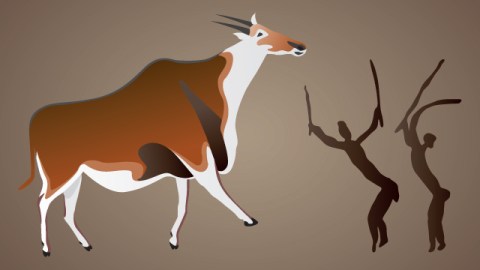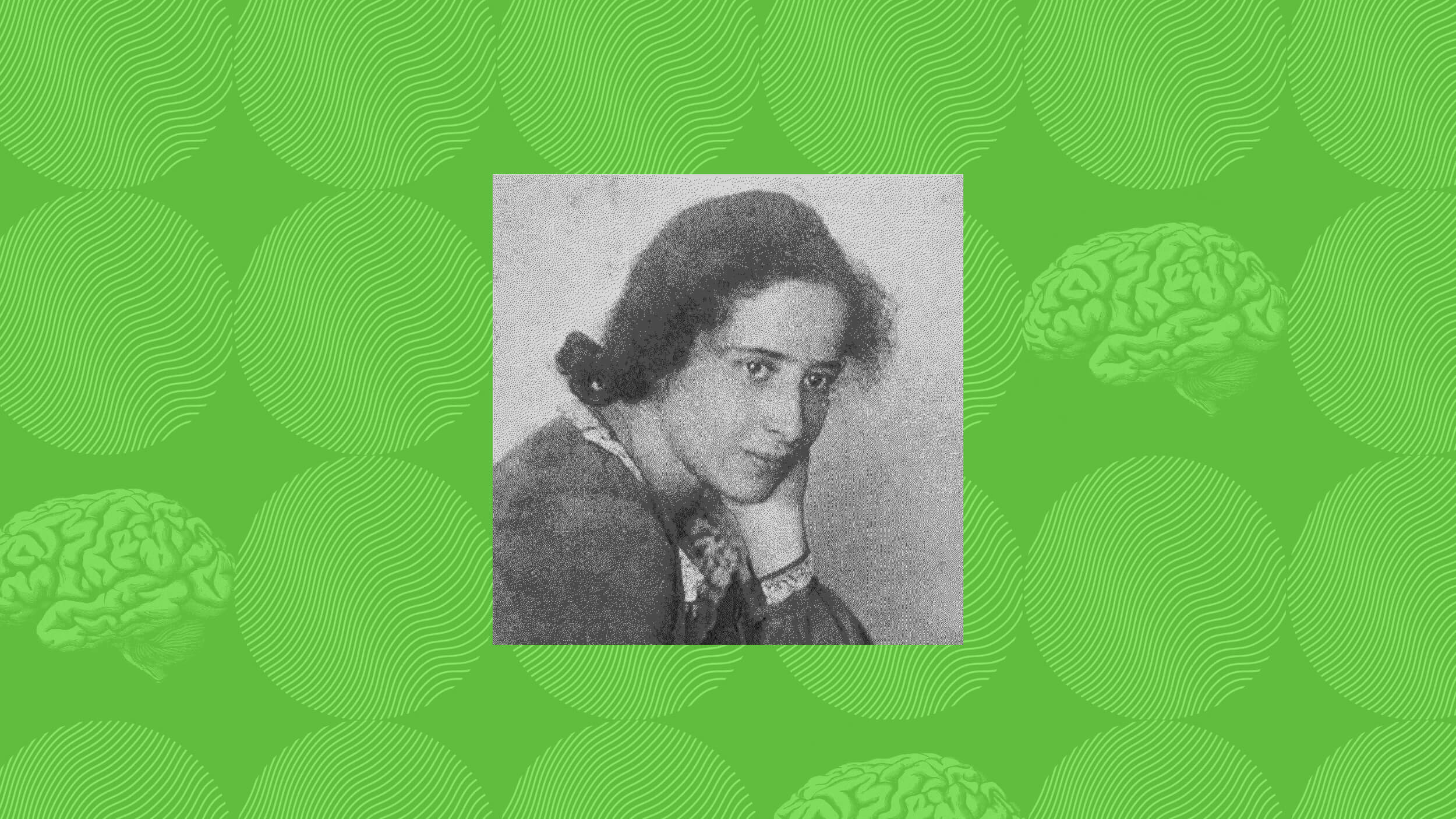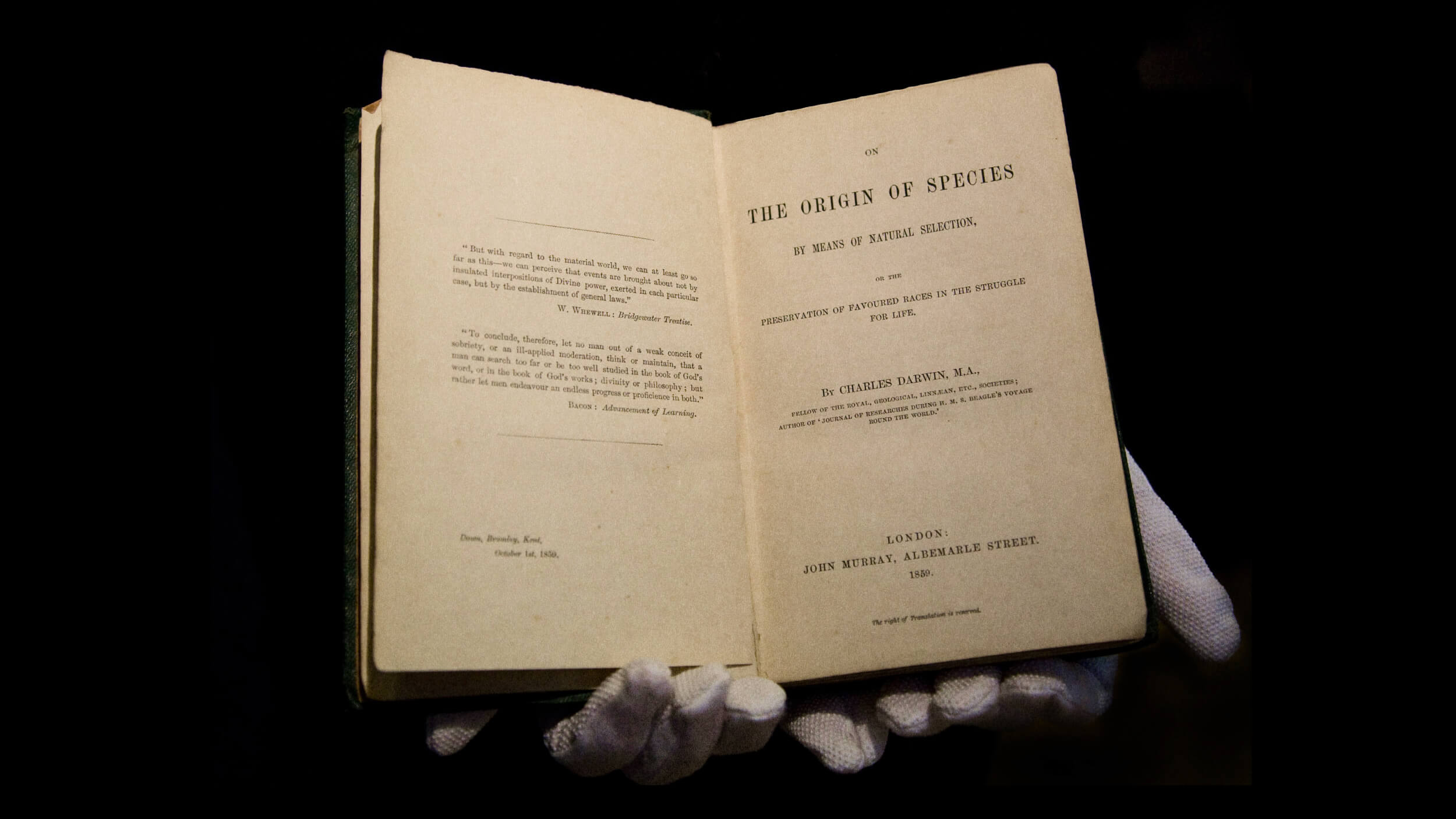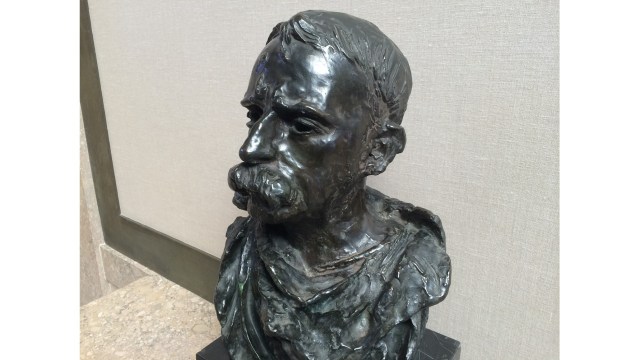Where Does Religion Come From?

If we were to ask a priest where religion originated, his response would most likely be rooted in his theology. The same would hold true for a rabbi, imam, yogi and so forth. We believe that the roots of our personal faith provide an answer to questions of creation. As Arthur Schopenhauer put it, “Everyone takes the limits of his own vision for the limits of the world.”
Yet we often associate spiritual practices with limitlessness, similarly to how we assume that a ‘soul’ resides inside our flesh until it’s released. Death, in fact, has often been regarded as a prime suspect hovering around at the foundation of religion. The rituals and beliefs of an afterlife provide an antidote to requiring too much responsibility during this one.
This is potentially a relatively recent development. Religious historian Karen Armstrong also assumes the culprit to be death, though perhaps not in a way that we’d expect. In her latest book, Fields of Blood: Religion and the History of Violence in the World, she writes,
Much of what we now call ‘religion’ was originally rooted in an acknowledgement of the tragic fact that life depended on the destruction of other creatures; rituals were addressed to helping human beings face up to this insoluble dilemma.
It is interesting to note that this dilemma developed due to the murdering of our prey, not other human beings. As our ancestors evolved ethics in growing societies, living in larger and more diverse groups, our paradoxes could not be veiled. While we created bonds by helping our families and friends we also regularly took the lives of other animals, many of whom, in their own ways, were doing the same.
How could this bipedal animal that had gained an advantage through the development of a neocortex grapple with the realization that as much as they craved security in an uncertain world, they also enjoyed the act of eating other sentient life? That it is a biological inheritance is unquestionable. Yet another question persisted: how could one hand help create life while the other so frequently took it?
Remember the crude instruments these hunters used to kill. There was no ease of gunpowder or hunting parks for wealthy tourists. As Armstrong notes, ancient arrows could barely pierce skin. It would take the poison dabbed onto the tip hours to be effective, during which time the hunters tracked and waited. It appears it is that moment that this thing we now call religion was born.
As the animal lay dying, the hunters would gather around it, stroking its head and singing songs. When it cried out in pain, they cried to empathize. They recognized the cycles of life as a sacrifice helping them live their own. Our ancestors knew they were part of a process, not separate from it. Ritual was born.
I would never claim that life was easier at any moment other than now; I’m not a romantic of bygone eras. As Armstrong writes, early humans liked the hunt. Many continue that trend today. It’s as much part of our DNA as are the emotions and ideologies we’ve developed to help us cope with the fact that we, like those animals, are all going to die.
But the modern disconnection from the cycles of the natural world is disconcerting. When religion is predominantly presented as a building you go to or a specific time of year that needs recognition—and that only involves one species—something special is lost
Armstrong argues throughout her book that our understanding of what we now call ‘religion’ is a relatively modern invention, fostered by secular advancements in Europe and America over the last 200 hundred years. And while I’m personally a fan of such advancements, I understand her point: there was no separate thing called ‘religion’ teased apart from daily life. The cosmic and mundane spun together.
It’s hard to imagine this connection when your meat is shrink-wrapped and boneless. It’s even harder to comprehend in a park where you’re guaranteed bounty simply by standing a hundred yards away and pulling a trigger. This isn’t an argument about skill or convenience. It’s about empathy, an emotion lacking when we’re so far removed from our origins.
In his classic work on the topic, Patterns in Comparative Religion, Mircea Eliade wrote,
What I think more useful than the classifying of myths and seeking for their possible ‘origins,’ is the study of their structure and the part they play in the spiritual experience of primitive man.
Creation stories are essential: they ground us. Knowing where a tradition arises helps us trace the twists and turns our ideologies have taken over the millennia. Sometimes this is good; we all know the biblical, quranic and other theological passages regarding slavery and the subjugation of women that (should) play no role in our world today. We’ve evolved, for the most part, and that’s a positive development.
But sometimes old wisdom has value. Our ancestors understood that to take something meant to give something back. Rituals, odd as some may seem today, were attempts at doing so. This is a direct contradiction to the free market, where humans are numbers crunched for efficiency and value to consistently cut costs and increase profits.
I might be a fan of secularism and would never argue that policy be derived from texts, but the complete disconnection from our spiritual practices in governance and society is equally dangerous. Armstrong argues this throughout her book. While I don’t agree with all of her points—I do believe that religion is culpable for much of the pain we experience today, not just power grabs and policies—on this point regarding the origins of the religious, we might consider paying closer attention if we want to understand the spiritual experience of modern man.
Image: ArtHeart/shutterstock.com





